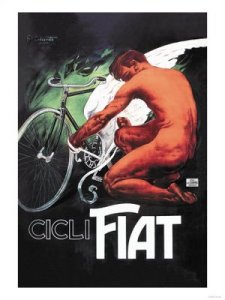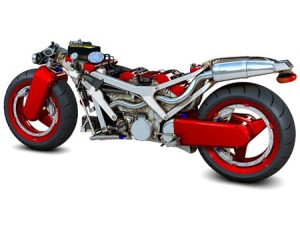I know I've veered off course in October but at least I'm delivering some entertainment, no?
I said, no? Bah. Da dums.
Nothing a Lou Monte song can't fix:
Viva Girogio Washigtoniogni!
Monday, October 26, 2009
Pondering The Italian Language
I want to make my peace right here, right now.
Someone on another blog presented an interesting comment about the United Nations official languages. As some of you may or may not know, the official languages of the UN are: English, French, Arabic, Chinese, Russian and Chinese.
However, it's rather obtuse that Italian, with direct lineage to Latin and among the most beautiful languages in the world (if not the most beautiful) along with its staggering importance to European civilization, is overlooked.
I assume the reason why these languages were selected comes down to two things: politics, sheer numbers and history. Italian - with roughly 60 million speakers and a minor political player (in the age between the Treaty of Westphalia and WWI especially. In the post-war era Italy was able to improve on this playing a key role in the development of the EU, ESA and NATO) - doesn't fit the first two but the third one - history - it does.
If we appeal to history (encompassing culture), then Italian might in this section becomes apparent. It comfortably sits equal to French and perhaps even more so than Spanish.
Two other languages that also meet the politics, numbers, culture criteria are German, Japanese and Hindi.
***
Speaking about beautiful languages. I recognize beauty is in the eye of the beholder and that there are many beautiful languages in this wonderful world, but it would take a lot to convince me that Italian is not among them.
A tale of two people I must tell. One negative, one positive.
Not so long ago I was surprised to hear one person assert (a British citizen living in Spain) rather condescendingly that French and Italian are "clunky" languages" and that Spanish is a "purer" and "greater" language. Needless to say, I disagree with him. To me, all three are wickedly stylish languages. Italian and French clunky? I still don't know what he could have meant.
Soon after that, my friend, a wise and well-traveled pediatrician, and I were engaged in conversation. He speaks a few languages (he happens to be a fan of German) and he assuredly felt by far, bar none, that Italian stood at the apex of all languages. The cadence, tone and layered texture of the language connects to him on a subconscious level. He described it as words gently moving between time and space; flowing like drops of rain rolling off leaves.
Ok, enough of this. Back to the industrial stuff!
Someone on another blog presented an interesting comment about the United Nations official languages. As some of you may or may not know, the official languages of the UN are: English, French, Arabic, Chinese, Russian and Chinese.
However, it's rather obtuse that Italian, with direct lineage to Latin and among the most beautiful languages in the world (if not the most beautiful) along with its staggering importance to European civilization, is overlooked.
I assume the reason why these languages were selected comes down to two things: politics, sheer numbers and history. Italian - with roughly 60 million speakers and a minor political player (in the age between the Treaty of Westphalia and WWI especially. In the post-war era Italy was able to improve on this playing a key role in the development of the EU, ESA and NATO) - doesn't fit the first two but the third one - history - it does.
If we appeal to history (encompassing culture), then Italian might in this section becomes apparent. It comfortably sits equal to French and perhaps even more so than Spanish.
Two other languages that also meet the politics, numbers, culture criteria are German, Japanese and Hindi.
***
Speaking about beautiful languages. I recognize beauty is in the eye of the beholder and that there are many beautiful languages in this wonderful world, but it would take a lot to convince me that Italian is not among them.
A tale of two people I must tell. One negative, one positive.
Not so long ago I was surprised to hear one person assert (a British citizen living in Spain) rather condescendingly that French and Italian are "clunky" languages" and that Spanish is a "purer" and "greater" language. Needless to say, I disagree with him. To me, all three are wickedly stylish languages. Italian and French clunky? I still don't know what he could have meant.
Soon after that, my friend, a wise and well-traveled pediatrician, and I were engaged in conversation. He speaks a few languages (he happens to be a fan of German) and he assuredly felt by far, bar none, that Italian stood at the apex of all languages. The cadence, tone and layered texture of the language connects to him on a subconscious level. He described it as words gently moving between time and space; flowing like drops of rain rolling off leaves.
Ok, enough of this. Back to the industrial stuff!
Where Art And Science Meet
While September was my most productive month, if you can call it that, I've reverted to my slow ways in October. Life gets in the way, you know that.
Great article here in the NYT for you history enthusiasts about science, art, Renaissance Italy and Leonardo da Vinci.
Taw-taw. Should be back with a couple more posts in the upcoming days.
Great article here in the NYT for you history enthusiasts about science, art, Renaissance Italy and Leonardo da Vinci.
Taw-taw. Should be back with a couple more posts in the upcoming days.
Toronto's Italian Walk Of Fame And Casa d'Italia's Revival In Montreal

In a recent conversation, my friend, Andy Kim, yes that Andy Kim (yes, shameless name dropping on my part) recounted the story about his honor of inducting Connie Francis in the Italian Walk of Fame in Toronto. It's the 40th anniversary since the iconic song 'Sugar, Sugar' became a #1 hit - by the way. Not bad for a Montreal native, eh?
The subject had come up because I mentioned to him earlier in our discussion about the revival project of Casa d'Italia in Montreal and my small role in it. Your truly was asked to write, well, let's just say to put into words who we are and where we're going as a community - among other things. I'm truly thankful for having met Pasquale Iacobacci.
But the point of this post wasn't to boast about my friendship with Andy Kim - did I mention this? Oh yes, I see that I did - or my work with Casa d'Italia - although I should take a couple of minutes to talk about it. Actually, I'll do this right now.
Casa d'Italia is a Montreal institution that has served the Italian community since 1936. Much history has been written and witnessed within its Art Deco wallks, but in recent years the Casa's relevance had slipped into obscurity. This raised concerns among community leaders and led by tireless Mr. Iacobacci as the "project-manager-point-guard," the sought to change this.
With a renewed interest in Italian culture among younger people, it was time to seize the moment and drag Casa d'Italia into the 21st century.
Italian contribution to the North American experience has been massive and it's quite unbecoming - if not embarrassing - for a community as big as ours to not have a a community center preserving our heritage with an, among other things, archive center.
Incidentally, if you're a Montreal Italian, Casa d'Italia is interested in collected your family's history. Contact them at 514-271-2524.
Ok. Back to the Italian walk of fame. Check out the site.
Colnago Bikes Still Cutting Edge

Ernesto Colnago founded a bike manufacturing company in 1954 that, in time, conquered the world. If one bike can claim to be one of the greatest ever, it's Colnago. His bikes have been utilized by over 100 professional teams and 2500 riders who in total have won more than 7500 races! One of those riders was Eddie Merckx of Belgium, arguably the greatest cyclist in history.
Colnago was the first to build cold-forged forks as well as straight forks in the 1980s. Other innovations included introducing the lightest steel frame bike (5.6kg) in 1972 and the Columbus tube frame in 1982. However, important as these were (and there are many more) in the development and evolution of bicycle technology, it was his breakthrough with a carbon fiber (as well as titanium and aluminum) frame in 1986 in conjunction with Ferrari.
And it's doesn't stop there. Over 50 years since opening, Colnago continues to be at the forefront of bicycle technology.
A Master For The Ages: Giotto Bizzarrini

Giotto Bizzarrini played a defining role in the development of Italian automobile design. Hailing from Tuscany, he was an engineer for Ferrari in the 1950s and Lamborghini. He also spearheaded projects for concept cars some of which boast his name.
In an industry and country famous for its car designers, Bizzarrini is an oft-forgotten but important figure. Working for famous companies, his input helped establish unforgettable masterpieces on the sports car landscape. His piece de resistance for Ferrari was the 250 GTO. In addition, he designed the Testa Rossa. But his time with Ferrari didn't end well, as he was part of the group who left the company in what is known as the "Ferrari Night of the Long Knives." From there he left for Scuderia Serrenissima and eventually, Alfa Romeo, Iso Rivolta where he designed the Iso Rivolta GT and Iso Grifo.
Indeed, the creative Bizzarrini remains active (designing the GT Strada 4.1 concept car) carries the 'Giotto' name with honor. Giotto, of course, being one of the early masters of Renaissance painting.
Riva Yachts
In a previous post, I introduced some Italian yacht manufacturers. I missed this one; or rather discovered Riva Yachts. More exclusive than these guys it possibly doesn't get. Handcrafted...meh you know the rest.
Julia Childs Simplistic View Of Simplicity
How many times I've heard it be claimed that Italian stuff is "over rated." Oh me, oh my! From its soccer to its olive oil to its fashion to its cars. Julia Childs and her opinion of Italian cuisine is no exception. It's all par for the course as far as I'm concerned.
Look, some still say The Beatles were "a mistake" and that Wayne Gretzky wasn't the best hockey player ever despite evidence pointing otherwise. Opinions are opinions. Childs has earned her right to hers. She's done much for cooking in America.
It is what is.
It's their loss, in my view, if they choose to "pigeon-hole" the food born in the peninsula. Italian cuisine offers a dizzying array and stupendous amount of depth, quality, substance , creativity, sophistication and diversity. Its population's pallet is wickedly advanced to the point of insanity.
And who cares if it's simple? Therein lies the genius, no? There's sophistication and elegance in minimalism, no? Simplicity can be, I think, complex, no?
Look, some still say The Beatles were "a mistake" and that Wayne Gretzky wasn't the best hockey player ever despite evidence pointing otherwise. Opinions are opinions. Childs has earned her right to hers. She's done much for cooking in America.
It is what is.
It's their loss, in my view, if they choose to "pigeon-hole" the food born in the peninsula. Italian cuisine offers a dizzying array and stupendous amount of depth, quality, substance , creativity, sophistication and diversity. Its population's pallet is wickedly advanced to the point of insanity.
And who cares if it's simple? Therein lies the genius, no? There's sophistication and elegance in minimalism, no? Simplicity can be, I think, complex, no?
Making Yachts Look Stylish
Question. Who has won Showboats International "Ship Yard Number 1" award six times running the first yacht company to do so?
Benetti.
Founded in 1873 in Darsena Italy, Benetti is now owned by Azimut and produces a wide range of luxurious yachts (45, 50, 75 feet etc.) made up of various composite materials (alloys, fiberglass, steel etc.), each considered to be world class. Its dominance is based on the usual Italian recipe of offering superior custom design and quality. With little, if any, advertising (when was the last time you saw a commercial for Zegna or Ferrari?) the company uses the "exclusive" marketing technique and still manages to capture a large customer base. Read about the Patricia designed by Stefano Righini in the hyperlink.
Benetti official site.
***

Benetti isn't the only great player in Italian boat manufactuting. Ficantieri - SpA Cantieri Navali Trestino, founded in 1908 (reorganized in 1959), has too won some awards and the legendary Cantieri Baglietto, another innovative company, founded in 1854.
From Baglietto webstite with d'Annunzio describing one of its vessels:
"These were used both as anti-submarine patrol vessels and as insidious attack craft against the Austrian fleet, depending as to how they were equipped. The incomparable poet, Gabriele d'Annunzio, an admirer of the audacity of these vessels, used the abbreviation MAS for his motto: Memento Audere Semper."
And:
"The honours roll in thick and fast: Twins VI triumphs in the Italian Cup in Helsinki (1953) and in Genoa (1954), the Twins VII is victorious in Sweden at Sandhamn, its first Italian success is the Gold Cup in 1955 followed the next year by the French Cup, in Geneva. The Voloira III, designed by Ray Hunt in 1964, concludes the series."
Each website is outstanding by the way.
Benetti.
Founded in 1873 in Darsena Italy, Benetti is now owned by Azimut and produces a wide range of luxurious yachts (45, 50, 75 feet etc.) made up of various composite materials (alloys, fiberglass, steel etc.), each considered to be world class. Its dominance is based on the usual Italian recipe of offering superior custom design and quality. With little, if any, advertising (when was the last time you saw a commercial for Zegna or Ferrari?) the company uses the "exclusive" marketing technique and still manages to capture a large customer base. Read about the Patricia designed by Stefano Righini in the hyperlink.
Benetti official site.
***

Benetti isn't the only great player in Italian boat manufactuting. Ficantieri - SpA Cantieri Navali Trestino, founded in 1908 (reorganized in 1959), has too won some awards and the legendary Cantieri Baglietto, another innovative company, founded in 1854.
From Baglietto webstite with d'Annunzio describing one of its vessels:
"These were used both as anti-submarine patrol vessels and as insidious attack craft against the Austrian fleet, depending as to how they were equipped. The incomparable poet, Gabriele d'Annunzio, an admirer of the audacity of these vessels, used the abbreviation MAS for his motto: Memento Audere Semper."
And:
"The honours roll in thick and fast: Twins VI triumphs in the Italian Cup in Helsinki (1953) and in Genoa (1954), the Twins VII is victorious in Sweden at Sandhamn, its first Italian success is the Gold Cup in 1955 followed the next year by the French Cup, in Geneva. The Voloira III, designed by Ray Hunt in 1964, concludes the series."
Each website is outstanding by the way.
The Falco's Aeronautical Legacy

Who is Stelio Frati?
He's a Milanese-born mechanical engineer and free-lance aeronautical designer who possesses a revered reputation among airplane enthusiasts as great as Enzo Ferrari has for race car aficionados.
Frati is best remembered for designing in the 1950 and 60s an aerobatical, hand-crafted, wooden plane (yes, wooden) plane called the Falco. He mastered the art of civil utility aircraft design. His two most famous were the F8L and SF260 (SIAI Marchetti).
The latter being a ground-breaking, three-seater fighter-training plane used all over the world breaking many speed world records along the way.
In addition, the Falco is considered to be the best-handling plane to ever grace the sky.
The elegant F8L (C-90 engine) , for its part, was virtually unbeatable in its racing class.
To be sure, the Falcos weren't the only planes he designed. Earlier in his career he designed, to name but a couple, the FM1 Passero (which was more of a glider with a top speed of 94mph),F4 Rondone and the two-seat monoplane General Avia F22. A plane used by the Dutch aerobatic display team.
Frati founded General Avia company in 1970.
***
In other aeronautical related info:
Aerobatic group flying in Italy.
The Fiat CR42:
From wiki: "The Fiat CR.42 was the last of the Fiat biplane fighters to enter front line service as a fighter, and represented the epitome of the type. RAF Intelligence praised its exceptional manoeuvrability, further noting that "the plane was immensely strong."
Only four are known to be still in existence.
Is there anything FIAT hasn't built?
Fix It Again Tony was a popular joke but no one can dispute FIAT's engineeting and design heritage. It does have a record of excellence.
Exploring Renaissance Cartography
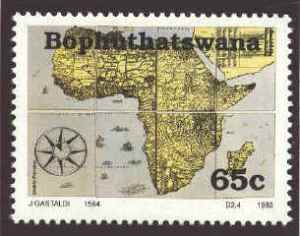
Originally an engineer, Giacomo Gastaldi soon turned his attention to mapmaking and in the process became one of the most important, inventive and innovative cartographer of the Renaissance.
I rip this (without shame) from Wiki:
"According to the author Philip Burden, Gastaldi’s 1548 edition of Ptomely's Geography , "was the most comprehensive atlas produced between Martin Waldseemueller's Geographia of 1513, and the Abraham Ortelius Theatrum of 1570,” because it included regional maps of the Americas.
Yet Gastaldi’s detailed attention to the new world was not his only contribution to the development of map production. The Ptolemy edition of 1548 was also an innovation in that Gastaldi and his publisher reduced the size of the volume, thereby making the first ‘pocket’ atlas. Finally, Gastaldi’s work also indicated a shift in cartographical technique via its use of the copper engraving. Prior to this period, most maps had been printed from woodcuts; by using a copper plate rather than a woodblock to print, the engraver could render a much higher level of finesse and detail.
The following quote (again, without shame) is not from Wiki:
"Cosmographer to the Republic of Venice, is considered by many to be “the greatest cartographer of the Italian school” (Verner-Stubbs, p. 12). He was the first to propose a strait separating North America from the Asian continent. Gastaldi’s most important work includes “La Nova Francia – one of the first maps to delineate the east coast of North America, and when first issued in 1556, the very first regional map of any part of present-day Canada."
See this list for more Italian cartographers.
Which eventually brought me to this interesting "History of Italy" index.
Note: Map image found at this site.
Meet Giuseppe Caspar Mezzofanti: One Smooth Linguist
Mr. Mezzofanti, it is believed, fluently spoke 38 languages and another 30 less so. Don't reach for your calculators. I got one. This means he was able to communicate in 68 languages. Seems fanciful?'
Probably. But even if it was half of this, 'Pep would have no problem asking "where's the bathroom?" or "hold the fries" in most places on earth.
Here's more on the hyperpolyglot.
"The most famous hyper-polyglot was probably Giuseppe Mezzofanti, a 19th century Italian Cardinal, who was reputed to speak 72 languages. The claim sounds preposterous. If you assume each language had 20,000 words, and Mezzofanti could remember a word infallibly after meeting it only once, he'd still have to learn a word a minute, 12 hours a day for five-and-a-half years. Not likely. But Mezzofanti was constantly tested by critics, and they were all impressed. One of them even called him "the Devil" because of his uncanny skill. Even if the stories are exaggerated, he was clearly some kind of linguistic superstar.
Did Mezzofanti have an extraordinary brain? Or are hyper-polyglots just ordinary people with ordinary brains who manage to do something extraordinary through motivation and hard work?"
Probably. But even if it was half of this, 'Pep would have no problem asking "where's the bathroom?" or "hold the fries" in most places on earth.
Here's more on the hyperpolyglot.
"The most famous hyper-polyglot was probably Giuseppe Mezzofanti, a 19th century Italian Cardinal, who was reputed to speak 72 languages. The claim sounds preposterous. If you assume each language had 20,000 words, and Mezzofanti could remember a word infallibly after meeting it only once, he'd still have to learn a word a minute, 12 hours a day for five-and-a-half years. Not likely. But Mezzofanti was constantly tested by critics, and they were all impressed. One of them even called him "the Devil" because of his uncanny skill. Even if the stories are exaggerated, he was clearly some kind of linguistic superstar.
Did Mezzofanti have an extraordinary brain? Or are hyper-polyglots just ordinary people with ordinary brains who manage to do something extraordinary through motivation and hard work?"
Espresso: We Stand On Guard For Thee!
Italo-phile extraodinaire (Dyno-mite! as JJ would say) Domenic sent this over to me. In my post about pizza, I lamented there was no espresso police. I stand corrected: Istituto Nazionale Espresso Italiano (INEI).
Mandate:
The Italian Espresso National Institute safeguards and promotes the original Espresso through a product certification: the Certified Italian Espresso.
Funny. Italy and food are causing an intellectual crisis of sorts for me. I'm pretty much against the growth of government infringing on individual liberties. My outlook pretty much in line with the Founding Fathers in the United States. Those guys knew what they were talking about!
But when it comes to food and the constant distortion of Italian food, I say bring on the enforcers dammit!
Mandate:
The Italian Espresso National Institute safeguards and promotes the original Espresso through a product certification: the Certified Italian Espresso.
Funny. Italy and food are causing an intellectual crisis of sorts for me. I'm pretty much against the growth of government infringing on individual liberties. My outlook pretty much in line with the Founding Fathers in the United States. Those guys knew what they were talking about!
But when it comes to food and the constant distortion of Italian food, I say bring on the enforcers dammit!
About
Welcome to e-Talian.
Part of the objective on this blog is to explore an aspect often overlooked and misunderstood: Italy's manufacturing and industrial legacy. Along the way, it is hoped to shed some light on how the Italian mind functions within a society riddled with contradictions and brilliant creativity.
Italy is more than just about natural beauty, art, fashion and food. It has an industrial face worth exploring.
This is a huge task. Some may even believe this to be a cultural project. I just see it as a journey into one of the most interesting countries in the world.
Know a thing or two about Italy and want to express it? Send it over whether they are links, articles or blog posts discussing art, film, politics, music, sports, history and whatever else that has been unique to the Italian cultural and industrial legacy.
Moving forward, I hope to create a directory of Italian companies and/or companies selling Italian goods and services.
Kick back and pop in some Dean Martin and enjoy. A presto.
e-Talian is maintained and operated by Alessandro Nicolo with the help of Sarah di Staulo and is based in Montreal, Canada.
Logo/image by John Custy
Part of the objective on this blog is to explore an aspect often overlooked and misunderstood: Italy's manufacturing and industrial legacy. Along the way, it is hoped to shed some light on how the Italian mind functions within a society riddled with contradictions and brilliant creativity.
Italy is more than just about natural beauty, art, fashion and food. It has an industrial face worth exploring.
This is a huge task. Some may even believe this to be a cultural project. I just see it as a journey into one of the most interesting countries in the world.
Know a thing or two about Italy and want to express it? Send it over whether they are links, articles or blog posts discussing art, film, politics, music, sports, history and whatever else that has been unique to the Italian cultural and industrial legacy.
Moving forward, I hope to create a directory of Italian companies and/or companies selling Italian goods and services.
Kick back and pop in some Dean Martin and enjoy. A presto.
e-Talian is maintained and operated by Alessandro Nicolo with the help of Sarah di Staulo and is based in Montreal, Canada.
Logo/image by John Custy
History And Spirit Make For A Special Place
Found this on examiner.com. I love this comment because this is exactly how I felt eating gelato in Florence - only difference was the flavor I had was stracciatella.
"You know you are in Italy when you find pink grapefruit gelato on a really hot day and experience the great delight of eating the dripping confection on a street corner and feeling like you have discovered one of life’s great truths."
I've only visited Italy, France and Switzerland in Europe while my cousin did the rest and my sister England - a country she absolutely adored. Same with my cousin. So much so he lived in Scotland for two years. Me? I thoroughly enjoy the French.
However, nothing, and I mean nothing, is quite like Italy and that's a bold statement giving the great countries and cultures Europe possesses and graces the world with.
Still, culling our opinions of Italy over the years, we can honestly say that Italy is truly a country onto itself. No one, for better or worse, acts, thinks, behaves, eats, laughs, argues, insults, cries, play soccer, make cars, whatever, quite like the Italians. Geographically too, Italy finds itself in a special place. Protruding out into the Mediterranean with an exquisite and varied climate, it was perfectly placed to be a major trader linking the the brilliance of the East with Western Europe. This accorded Italy a chance to take its place as a leader in Western civilization at different moments and intervals in history .
We're not alone in feeling this way. The list of historical figures - through letters, personal diaries, poems, political statements etc. - who have been overwhelmed by her beauty (landscape, architecture and people) and ugliness (mafia, architecture and people) is staggering. Very few people leave Italy without an opinion. Even people who never talk suddenly open up with an opinion.
The polarizing extremes of both beauty and ugliness leaves you no choice but to speak out!
"You know you are in Italy when you find pink grapefruit gelato on a really hot day and experience the great delight of eating the dripping confection on a street corner and feeling like you have discovered one of life’s great truths."
I've only visited Italy, France and Switzerland in Europe while my cousin did the rest and my sister England - a country she absolutely adored. Same with my cousin. So much so he lived in Scotland for two years. Me? I thoroughly enjoy the French.
However, nothing, and I mean nothing, is quite like Italy and that's a bold statement giving the great countries and cultures Europe possesses and graces the world with.
Still, culling our opinions of Italy over the years, we can honestly say that Italy is truly a country onto itself. No one, for better or worse, acts, thinks, behaves, eats, laughs, argues, insults, cries, play soccer, make cars, whatever, quite like the Italians. Geographically too, Italy finds itself in a special place. Protruding out into the Mediterranean with an exquisite and varied climate, it was perfectly placed to be a major trader linking the the brilliance of the East with Western Europe. This accorded Italy a chance to take its place as a leader in Western civilization at different moments and intervals in history .
We're not alone in feeling this way. The list of historical figures - through letters, personal diaries, poems, political statements etc. - who have been overwhelmed by her beauty (landscape, architecture and people) and ugliness (mafia, architecture and people) is staggering. Very few people leave Italy without an opinion. Even people who never talk suddenly open up with an opinion.
The polarizing extremes of both beauty and ugliness leaves you no choice but to speak out!
Italians Not Exactly In Love With The Internet
I stumbled on a site called The Annotico Report earlier today. Annotico is part of something called the Italiamia network and is basically a newsblog covering all things Italian in the the U.S. and around the world.
It's where I found this information discussing the statistics on mobile and internet usage in Italy. I knew Italy wasn't the most connected nation. The question I have is: Why?
It's where I found this information discussing the statistics on mobile and internet usage in Italy. I knew Italy wasn't the most connected nation. The question I have is: Why?
Pizza Is Not Grub Food
Enjoying my stay here in Delaware (were in Washington D.C. for a couple of days as well) and had some time to post this. Americans consume more pizza on a per capita basis than any other country in the world.
However, it doesn't mean they're eating the best pizza. I find in North America pizza gets too gooey and drowned in way too much cheese. Not to say anything about how we've become ridiculous on how we garnish it. Seriously, pineapple? Smoked meat? The (weak) reasoning being they're are "no rules" to taste when it comes to pizza.
Pish posh! Of course, there is. Just like "exotic" coffees destroy the essence of the espresso drinking experience, dressing a pizza with ingredients not naturally aligned with it forces people to miss the point of what good food is. Nothing drives me more insane than when people tell me "I'm too rigid" about food.
Hey, spaghetti alla carbonara should not come with cream and don't try and tell me otherwise, capiche? You can't go around changing things up will-nilly. Sure, adjust for local tastes but that comes with its own perils. That is, once you ponder you forfeit your right to call yourself an "authentic Italian" chef or restaurant.
I know in Italy there are all sorts of rules and laws governing certain foods pizza included.
Anyway, we've been eating pizza and I must admit, while in some cases the pizza is fine, some of it is totally, well, gross. Which brings me to a link I found:
Associazone Verace Pizza Napoletana
They're fighting the good fight. And yes, if you've ever had pizza in Naples you'll understand why they exist.
Now we need one for espresso. Someone should explain to some that an espresso served with a weak golden cream (crema) is just plain wrong. In fact, if they serve it to you with a straight face you know they don't take the art of espresso seriously.
Run out. And keep running!
However, it doesn't mean they're eating the best pizza. I find in North America pizza gets too gooey and drowned in way too much cheese. Not to say anything about how we've become ridiculous on how we garnish it. Seriously, pineapple? Smoked meat? The (weak) reasoning being they're are "no rules" to taste when it comes to pizza.
Pish posh! Of course, there is. Just like "exotic" coffees destroy the essence of the espresso drinking experience, dressing a pizza with ingredients not naturally aligned with it forces people to miss the point of what good food is. Nothing drives me more insane than when people tell me "I'm too rigid" about food.
Hey, spaghetti alla carbonara should not come with cream and don't try and tell me otherwise, capiche? You can't go around changing things up will-nilly. Sure, adjust for local tastes but that comes with its own perils. That is, once you ponder you forfeit your right to call yourself an "authentic Italian" chef or restaurant.
I know in Italy there are all sorts of rules and laws governing certain foods pizza included.
Anyway, we've been eating pizza and I must admit, while in some cases the pizza is fine, some of it is totally, well, gross. Which brings me to a link I found:
Associazone Verace Pizza Napoletana
They're fighting the good fight. And yes, if you've ever had pizza in Naples you'll understand why they exist.
Now we need one for espresso. Someone should explain to some that an espresso served with a weak golden cream (crema) is just plain wrong. In fact, if they serve it to you with a straight face you know they don't take the art of espresso seriously.
Run out. And keep running!
A Note To Friends Of This Blog
I know I post infrequently. It's something I hope to change real soon. I know, I said the same thing a couple of months back. But youz gotta believe me!
However, before that I'm leaving on vacation - Washington D.C. and Delaware in case you're wondering. Will be back at the end of the month. Don't get too excited. When I get back I have to settled into my new home.
"Madonna, ragazzi!" as my friend from Grossetto used to say.
***
Just want to mention my grand father Paul Di Staulo who passed away this week-end. Born in Canada, he never lost his connection to the old country and remained a proud (and tough) Italian until he left for heaven. He was a musician and a baseball fan.
However, before that I'm leaving on vacation - Washington D.C. and Delaware in case you're wondering. Will be back at the end of the month. Don't get too excited. When I get back I have to settled into my new home.
"Madonna, ragazzi!" as my friend from Grossetto used to say.
***
Just want to mention my grand father Paul Di Staulo who passed away this week-end. Born in Canada, he never lost his connection to the old country and remained a proud (and tough) Italian until he left for heaven. He was a musician and a baseball fan.
The Interesting Life Of Lorenzo Da Ponte
As you know, once in a while I go all "history" on youz fine folks. Let's face it, you can't escape culture, arts and history when it comes to Italia. A friend sent me this link to librettist Lorenzo Da Ponte.
More on his bio:
"During his tenure Da Ponte wrote the librettos for numerous operas. The most notable of these were for three Mozart masterpieces— The Marriage of Figaro (1786), Don Giovanni (1787), and Così fan tutte (1790)—for which he contributed elegant, witty, and eminently singable words and created or adapted powerful plots and characters. Driven from Vienna after the emperor's death, Da Ponte wandered through Europe, married in Trieste, and settled (1792) in London. There he worked as a tutor of Italian, a bookseller, and a librettist to an Italian opera company until he went bankrupt in 1804.

A year later Da Ponte immigrated to America, where he failed in attempts to be a grocer, at selling medicines and drygoods, and at running a distillery. After a chance meeting with Clement Clarke Moore , however, he soon began a more successful career, spending most of the rest of his life in New York City as a celebrated teacher of Italian. A pioneer in the dissemination of Italian culture in the United States, he taught (1805-25) nearly 2,000 private pupils and in 1830 was appointed Columbia College's first professor of Italian language and literature (and the first such professor in the United States). His library, bought by Columbia in 1825, was the nucleus of its collection of Italian poetry and miscellaneous literature. In 1833 he helped establish the Italian Opera House in lower Manhattan, the first attempt to create a permanent American home for Italian opera. Da Ponte's last years were marred by poverty and the failure (1836) of the opera house."
More on his bio:
"During his tenure Da Ponte wrote the librettos for numerous operas. The most notable of these were for three Mozart masterpieces— The Marriage of Figaro (1786), Don Giovanni (1787), and Così fan tutte (1790)—for which he contributed elegant, witty, and eminently singable words and created or adapted powerful plots and characters. Driven from Vienna after the emperor's death, Da Ponte wandered through Europe, married in Trieste, and settled (1792) in London. There he worked as a tutor of Italian, a bookseller, and a librettist to an Italian opera company until he went bankrupt in 1804.

A year later Da Ponte immigrated to America, where he failed in attempts to be a grocer, at selling medicines and drygoods, and at running a distillery. After a chance meeting with Clement Clarke Moore , however, he soon began a more successful career, spending most of the rest of his life in New York City as a celebrated teacher of Italian. A pioneer in the dissemination of Italian culture in the United States, he taught (1805-25) nearly 2,000 private pupils and in 1830 was appointed Columbia College's first professor of Italian language and literature (and the first such professor in the United States). His library, bought by Columbia in 1825, was the nucleus of its collection of Italian poetry and miscellaneous literature. In 1833 he helped establish the Italian Opera House in lower Manhattan, the first attempt to create a permanent American home for Italian opera. Da Ponte's last years were marred by poverty and the failure (1836) of the opera house."
Renewable Energy's Big Business
Interested in Italy's renewable energy industry? Here's a great resource to Italian RE businesses. It's broken down by category, industry etc.
The Economist recently published an article on this incredibly complex subject. To be sure, I'm not sure what the conclusion is. Nonetheless, from what I've read and heard, Italy is a leader on RE such as geothermal power and making inroads in wind power. For more information consult this fact sheet.
And then there's this piece in the WSJ about Italy's micro-renewable power projects.
The Economist recently published an article on this incredibly complex subject. To be sure, I'm not sure what the conclusion is. Nonetheless, from what I've read and heard, Italy is a leader on RE such as geothermal power and making inroads in wind power. For more information consult this fact sheet.
And then there's this piece in the WSJ about Italy's micro-renewable power projects.
Haulin' Ass Fiat Style
A buddy in Florida (a specialist/mechanic in American Hot Rods) forwarded me this. Of course, "Que" should be "Che". "Que Shkeef" is North American Italian slang (I'm guessing) for "Che schifo" which roughly translates into "how disgusting"!
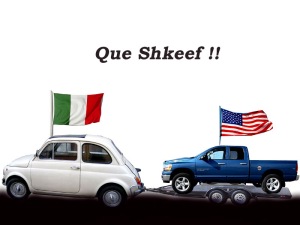

Robotics: Here Comes Dustbot
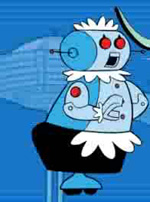
Many thanks to Alex who maintains Blog From Italy (link on the side. I was too lazy to hyperlink it. I know, my laziness is getting worse) for this post.
It's a link from a BBC report about an Italian dustbot set to clean the streets of Italy's ancient narrow streets. I can just picture it giving the finger to those who defy it or even stopping for an espresso at a local bar.
Doesn't Mrs. Dustbot (I think that was a sexist remark) look a lot like 'Rosie' from The Jetsons?
In any event, it's worth a try. Nature (and man-made urban settings) is the mother of invention. If you can't get garbage trucks through those streets, why not try a robot? The question is, how many of these will be needed to service a town? How much will it cost? I'll be curious to see how feasible this project will be.
A University With A Design
In Italy, there has to be a source for all that architecture, engineering and industrial design know how, right?
Try Politecnico of Milano.
Try Politecnico of Milano.
Italy's Early Childhood Education Ideas In North America
My wife earned her Masters at McGill University in Early childhood education. It was through her I learned two important Italian innovations in ECEC (early childhood education and care policy). The first is the world renowned Montessori method and the second is the lesser known Reggio Way (or Reggio Emilia approach).
There are many resources and books that cover this subject.
Bambini: The Italian Approach to Infant/Toddler Care. Early Childhood Education Series is one such book. Is it me or does it suck that worpdress doesn't allow for amazon links?
Anyway.
Abstract about the book:
"This book describes Italian experiences in providing early care and education, focusing on four cities--Milan, Parma, Reggio Emilia, and Pistoia--with outstanding city-run systems designed to serve children under 3 and their families. The book considers specific strategies or practices used, and interprets the significance of the Italian innovations for American early childhood practice. Following an introduction on the historical context of Italian early care and questions addressed by the book..."
Who said Italy is just about pasta and soccer?
Ok, that was lame. I couldn't figure out a way to close this post.
There are many resources and books that cover this subject.
Bambini: The Italian Approach to Infant/Toddler Care. Early Childhood Education Series is one such book. Is it me or does it suck that worpdress doesn't allow for amazon links?
Anyway.
Abstract about the book:
"This book describes Italian experiences in providing early care and education, focusing on four cities--Milan, Parma, Reggio Emilia, and Pistoia--with outstanding city-run systems designed to serve children under 3 and their families. The book considers specific strategies or practices used, and interprets the significance of the Italian innovations for American early childhood practice. Following an introduction on the historical context of Italian early care and questions addressed by the book..."
Who said Italy is just about pasta and soccer?
Ok, that was lame. I couldn't figure out a way to close this post.
The World Of Furniture Design

Last month concluded the 2009 Salone Internazionale del Mobile also referred to the Milan furniture fair.
Companies present included, Meritalia and Danese Milano
Embracing Italy's Ancient Legacy
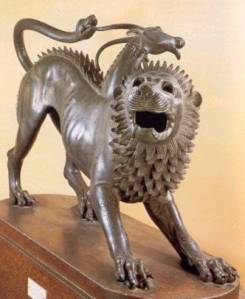
America is a child of the Age of Enlightenment. Italy, for its part, is an offspring of first indigenous cultures from, for example, Villanova and the Etruscans and later (after 500 B.C.) classical Greece and Phoenicia. - also referred to Magna Graecia (Greater Greece).
Though to some, the Etruscans are criminally overlooked as having greater influence as Baccolini writes:
"I can never succeed in understanding why Italians still fail to recognize the enormous contribution that the Etruscan civilization has made to our Western civilization. We keep on believing the teaching that the Greeks and above all the Romans are the peoples to whom the Western world owes its origins. All of this is considerably exaggerated and based on historical falsehoods. However, I have ascertained instead that it is the Etruscans, coming from the East, who are the true founders of our European culture, for both good and bad aspects."
Nonetheless, Italy evolved and eventually witnessed Ancient Greece give way to the splendor of Rome and later the Renaissance.
With all these civilizations, and I haven't even mentioned Germanic influences, spiritually flowing within the blood of its people, it's no wonder Italy has produced some of history's greatest cultural and industrial masterpieces.
The rest is, to capture a cliched caption, history.
Lay Your Eyes On This Baby
20 years ago I worked a summer night job and saved some cash to buy my first bicyle - a $1000 Gardin by Joe Gardin who I believe worked out of Ontario and was of Italian heritage.
Anyway.

As I shopped around I remember an owner of a bicycle shop taking me and a friend upstairs to show us his prized possessions: Italian bikes.
Usually, Italian bikes are not kept in showrooms fully mounted. Rather, the frames are hanging from the ceiling. It was at this particular bike shop I saw my first Pinarello with a price tag listed at a cool $4000 (for just the frame).
Pinarello, not surprisingly, has helped propel many great cyclists to victory over the years. They include Miguel Indurain, Bjarne Riss, Pedro Delgado, Jan Ulrich and Alessandro Petacchi.
From Blacks Cycle who also recites Pinarello's rich history and tradition:
"In 1980 Pinarello affiliated itself with Inoxpran, the leader in the development of stainless steel (also known for its specialty kitchen accessories). Inoxpran was in part responsible for revitalizing the once victorious cycling athletes that made up the Jolly team."
From Competitive Cyclist:
"Pinarello has earned a reputation for new tubing technology before other builders even considered experimenting with it...carbon fiber are some of the cutting edge raw material used by Pinarello in recent times to manufacture bikes with an exquisite knack for overwhelming their owners' most optimistic expectations...delight in Pinarello's groundbreaking designs, their hardheaded attention to detail in production, and their delicious paint and finish work."
Although I'm not sure what they mean by"delicious." Did they eat it?
Actually, on a slightly off topic, now's a good time to mention if there's one weakness I consistently find on Italian websites is the poor English grammar structure. I don't blame them but there are great writers out there who can enhance their message to heights they probably never imagined. If they're masters of attention to detail and perfection then language is no different; it's still art.
Yes, I'm available to help out. Heh.
Enough of that. Here's a link to 'Rello's factory in Treviso:
Anyway.

As I shopped around I remember an owner of a bicycle shop taking me and a friend upstairs to show us his prized possessions: Italian bikes.
Usually, Italian bikes are not kept in showrooms fully mounted. Rather, the frames are hanging from the ceiling. It was at this particular bike shop I saw my first Pinarello with a price tag listed at a cool $4000 (for just the frame).
Pinarello, not surprisingly, has helped propel many great cyclists to victory over the years. They include Miguel Indurain, Bjarne Riss, Pedro Delgado, Jan Ulrich and Alessandro Petacchi.
From Blacks Cycle who also recites Pinarello's rich history and tradition:
"In 1980 Pinarello affiliated itself with Inoxpran, the leader in the development of stainless steel (also known for its specialty kitchen accessories). Inoxpran was in part responsible for revitalizing the once victorious cycling athletes that made up the Jolly team."
From Competitive Cyclist:
"Pinarello has earned a reputation for new tubing technology before other builders even considered experimenting with it...carbon fiber are some of the cutting edge raw material used by Pinarello in recent times to manufacture bikes with an exquisite knack for overwhelming their owners' most optimistic expectations...delight in Pinarello's groundbreaking designs, their hardheaded attention to detail in production, and their delicious paint and finish work."
Although I'm not sure what they mean by"delicious." Did they eat it?
Actually, on a slightly off topic, now's a good time to mention if there's one weakness I consistently find on Italian websites is the poor English grammar structure. I don't blame them but there are great writers out there who can enhance their message to heights they probably never imagined. If they're masters of attention to detail and perfection then language is no different; it's still art.
Yes, I'm available to help out. Heh.
Enough of that. Here's a link to 'Rello's factory in Treviso:
Is Fiat Right For Chrysler?
In an earlier piece I wrote about a possible merger with Fiat and Chrysler and whether an Italian company is capable of taking on the corrosive situation.
I mentioned about Fiat's return to profitability under the stewardship of Segio Marchionne. Here's more about this story and on the CEO with unconventional methods.
I mentioned about Fiat's return to profitability under the stewardship of Segio Marchionne. Here's more about this story and on the CEO with unconventional methods.
Buona Pasqua
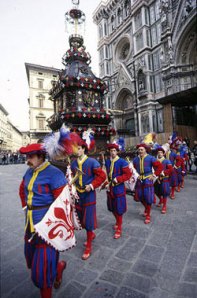
Nothing much else to say except for a description of the "explosion of the cart."
Italians celebrate Easter with a bang.
Where American Genius Met Italian Culture
From the Thomas Jefferson Encyclopedia, here's a link to an article titled "Italian influence at Monticello." Monticello was a dwelling Jefferson built for himself based on Italian characteristics.
Thomas Jefferson was an italophile. What an honor for Italian culture that a man of his brilliance and esteem would find value in it. (link to In Love with Italy website.)

"...Jefferson's first serious study of the Italian language probably began in 1764, when he purchased an Italian-English dictionary and three historical works in Italian. If by 1767 he saw a copy of Andrea Palladio's Four Books of Architecture in the original Italian, he may have been struck by Palladio's account of his most famous structure, the Villa Rotunda near Vicenza. The architect who most influenced the design of the first Monticello house described the Villa's particularly delightful situation on the top of "monticello," on one side washed at its base by a navigable river and on the other surrounded by cultivated hills abounding in fruits and forming a "gran Teatro."
"Whatever the direct inspiration, the indirect source of the name Monticello was undoubtedly Jefferson's early and intense study of the classical world and his deep identification with Roman culture. He filled pages of his Commonplace Book with extracts from well loved poems of Augustan Rome. He derived continuous architectural inspiration from Roman villas and their sixteenth-century Palladian descendants, and he considered the agriculture of the time of Cato and Varro as the origin of and model from modern husbandry. It is apparent that he regarded modern Italians as the heirs of the classical tradition. He believed that correct pronunciation of the Latin language could be learned in Italy and perhaps he felt that traces of the idealized rural life so vividly portrayed in the poetry of Horace and Virgil might yet survive on Italian soil."
"And so, when a boatload of Tuscan farmers, animals and plants arrived in Virginia in 1773, Jefferson may have viewed it as a delegation from an ancient world. The conductor of this small band of colonizers was Filippo Mazzei, who in his forty-three years had been an itinerant surgeon, a teacher of Italian, and a wine merchant, and was now intent on initiating trade between Virginia and Italy and establishing the culture of some of the agricultural productions of the Mediterranean. Mazzei, on his way to the Shenandoah Valley to settle, was intercepted in his passage by his host at Monticello, where he had stopped for an introductory visit. Jefferson gave him a small parcel of land on the fringes of his own property, Mazzei purchased additional acreage, and a third Italian hill, Colle, joined Monticello and Montalto in a neighborhood of farms and names like Clover Fields, Edgehill, and Buck Island"
"...It was in 1778, when Jefferson enlarged his orchard and made a detailed plan of its contents, that he could not remain satisfied with only Italian plants and farmers, but sought to introduce Italian fine arts, especially music, which he said was in Virginia in a state of "deplorable barbarism."
It's an interesting read.
Thomas Jefferson was an italophile. What an honor for Italian culture that a man of his brilliance and esteem would find value in it. (link to In Love with Italy website.)

"...Jefferson's first serious study of the Italian language probably began in 1764, when he purchased an Italian-English dictionary and three historical works in Italian. If by 1767 he saw a copy of Andrea Palladio's Four Books of Architecture in the original Italian, he may have been struck by Palladio's account of his most famous structure, the Villa Rotunda near Vicenza. The architect who most influenced the design of the first Monticello house described the Villa's particularly delightful situation on the top of "monticello," on one side washed at its base by a navigable river and on the other surrounded by cultivated hills abounding in fruits and forming a "gran Teatro."
"Whatever the direct inspiration, the indirect source of the name Monticello was undoubtedly Jefferson's early and intense study of the classical world and his deep identification with Roman culture. He filled pages of his Commonplace Book with extracts from well loved poems of Augustan Rome. He derived continuous architectural inspiration from Roman villas and their sixteenth-century Palladian descendants, and he considered the agriculture of the time of Cato and Varro as the origin of and model from modern husbandry. It is apparent that he regarded modern Italians as the heirs of the classical tradition. He believed that correct pronunciation of the Latin language could be learned in Italy and perhaps he felt that traces of the idealized rural life so vividly portrayed in the poetry of Horace and Virgil might yet survive on Italian soil."
"And so, when a boatload of Tuscan farmers, animals and plants arrived in Virginia in 1773, Jefferson may have viewed it as a delegation from an ancient world. The conductor of this small band of colonizers was Filippo Mazzei, who in his forty-three years had been an itinerant surgeon, a teacher of Italian, and a wine merchant, and was now intent on initiating trade between Virginia and Italy and establishing the culture of some of the agricultural productions of the Mediterranean. Mazzei, on his way to the Shenandoah Valley to settle, was intercepted in his passage by his host at Monticello, where he had stopped for an introductory visit. Jefferson gave him a small parcel of land on the fringes of his own property, Mazzei purchased additional acreage, and a third Italian hill, Colle, joined Monticello and Montalto in a neighborhood of farms and names like Clover Fields, Edgehill, and Buck Island"
"...It was in 1778, when Jefferson enlarged his orchard and made a detailed plan of its contents, that he could not remain satisfied with only Italian plants and farmers, but sought to introduce Italian fine arts, especially music, which he said was in Virginia in a state of "deplorable barbarism."
It's an interesting read.
Rice With Italian Flair

Not surprisingly, Asia produces and consumes 90% of the world's rice. Nonetheless, with this backdrop, Italy has managed to carve itself its own niche in the rice market growing its own unique types. In the West, Italy (after the U.S.) is the main producer, exporter and consumer of rice. It produces and exports roughly two thirds of all rice in the EU.
As is usually the case with Italy, the nation produces world class equipment for rice while one of the world's top research institutes can be found at the Rice Center in Mortara.
Rice companies operate in the Po Valley in the North of Italy where there are no shortage of producers.
I have a sudden urge for risotto with tomato and basil.
Food Deserves Great Equipment

I'm a busy little bumble bee aren't I this evening?
Here's a link to Italian Food Machinery.
This site offers you companies producing equpiment for both processing and restaurants. Be it in refrigeration, beverage, meat, utensils, ice cream, espresso, blenders, pizza and pasta equipment, processors, display cabinets and so on.
As you can see, no shortage of elegant machines to be found.
Heavy Machinery Can Be Green Concious Too
 Guidetti recycling systems and machinery is an environmentally concious company. Read more about them here.
Guidetti recycling systems and machinery is an environmentally concious company. Read more about them here. Picture from website.
North American Italian Coaches and GM's Have Long, Rich History
Watching NCAA basketball it's interesting to note the amount of great coaches of Italian descent. Tom Izzo, Rick Pitino and John Calipari all run some of the most successful and important basketball programs in the United States.
So I thought to provide a link summarizing the role of Italian-Americans in college basketball at the National Italian American Experience. Remember Hall of Fame coach Lou Carnesecca at St. John's? I do. And I'm Canadian! Speaking of which, Canadian basketball legend Jay Triano is now coaching the Toronto Raptors of the NBA.
It's not just in pro (Tony di Leo, Vinny del Negro, Mike D'antoni, Mike Fratello, PJ Carlesimo to name a few current and past examples) and college basketball Italians have left their mark. Broadcasting with Joe Garagiola, Dick Vitale and Phil Rizutto for example.

And what's with the Italians in football? Italians, probably more than any sport except for baseball, have left an important mark on the college and professional game. Think Joe Paterno, Vince Lombardi and yes Joe Montana and Dan Marino. Hall of Fame coaches include Carmen Cozza and Len Casanova. Currently, Eric Mangini, Tony Sparano, Jack Del Rio, SteveSpagnuolo all head NFL teams - see list here. The list doesn't include entire staffs. For this go here . There about 40 (six head and/or assistant coaches) in total. Bill Parcells is of Irish-Italian descent - just like Bruce Springsteen. Not sure if Don Shula is Italian. In the CFL, one of the league's all-time great coaches Wally Buono currently heads the B.C. Lions. In the past, Joe Faragalli, Danny Maciocia, Steve Buratto, Ralph Sazio, Al Bruno, Jack Gotta and George Brancato all led their respective teams to Grey Cup titles.
Baseball coaches included Joe Cavaretta, Mike Scioscia, Joe Girardi, Terry Francona, Tommy Lasorda, Tony LaRussa, Joe Torre and Joe Altobelli. Hockey has Lou Lamouriello (who has to be considered among the best GM's in hockey in the past 15 years) and Peter Chiarelli, John Tortarella, Tony Granato and Rick Tocchet. Soccer has Bruce Arena and Bob Lenarduzzi in the U.S. and Canada. Boxing had Cus D'Amato and Angelo Dundee (ne Mirena).
Who were the most influential coaches in your opinion?
And so on. I recognize this is not an in-depth list but to do one would entail a lot, lot, lot of work.
Don't make me list them all but wiki does a decent job.
Note: I plan to put something together shortly about Italy tracking their successes in sports like motor racing (auto and moto), skiing, cycling, soccer, Olympics and other sports.
So I thought to provide a link summarizing the role of Italian-Americans in college basketball at the National Italian American Experience. Remember Hall of Fame coach Lou Carnesecca at St. John's? I do. And I'm Canadian! Speaking of which, Canadian basketball legend Jay Triano is now coaching the Toronto Raptors of the NBA.
It's not just in pro (Tony di Leo, Vinny del Negro, Mike D'antoni, Mike Fratello, PJ Carlesimo to name a few current and past examples) and college basketball Italians have left their mark. Broadcasting with Joe Garagiola, Dick Vitale and Phil Rizutto for example.

And what's with the Italians in football? Italians, probably more than any sport except for baseball, have left an important mark on the college and professional game. Think Joe Paterno, Vince Lombardi and yes Joe Montana and Dan Marino. Hall of Fame coaches include Carmen Cozza and Len Casanova. Currently, Eric Mangini, Tony Sparano, Jack Del Rio, SteveSpagnuolo all head NFL teams - see list here. The list doesn't include entire staffs. For this go here . There about 40 (six head and/or assistant coaches) in total. Bill Parcells is of Irish-Italian descent - just like Bruce Springsteen. Not sure if Don Shula is Italian. In the CFL, one of the league's all-time great coaches Wally Buono currently heads the B.C. Lions. In the past, Joe Faragalli, Danny Maciocia, Steve Buratto, Ralph Sazio, Al Bruno, Jack Gotta and George Brancato all led their respective teams to Grey Cup titles.
Baseball coaches included Joe Cavaretta, Mike Scioscia, Joe Girardi, Terry Francona, Tommy Lasorda, Tony LaRussa, Joe Torre and Joe Altobelli. Hockey has Lou Lamouriello (who has to be considered among the best GM's in hockey in the past 15 years) and Peter Chiarelli, John Tortarella, Tony Granato and Rick Tocchet. Soccer has Bruce Arena and Bob Lenarduzzi in the U.S. and Canada. Boxing had Cus D'Amato and Angelo Dundee (ne Mirena).
Who were the most influential coaches in your opinion?
And so on. I recognize this is not an in-depth list but to do one would entail a lot, lot, lot of work.
Don't make me list them all but wiki does a decent job.
Note: I plan to put something together shortly about Italy tracking their successes in sports like motor racing (auto and moto), skiing, cycling, soccer, Olympics and other sports.
Will Fiat And Chrysler Merge?
I've always perceived the North American media and certain parts of its academia struggle with Italian culture. You hear it in little comments they make* regarding this utterly confusing nation. Italy is a labyrinth so complex it frustrates the heck out of North Americans and Northern Europeans.
This morning I was listening to the Tommy Schnurmacher Show on CJAD 800 (here in Montreal) interview associate professor of economics (at McGill I think) Tom Velk. Mr. Velk said something of interest regarding the possible merger of Fiat and Chrysler.
I loosely quote: hey I was driving. Excuse me if I didn't jot down word for word his comment.
"If the Germans couldn't make it work with Chrysler then, and I'm going to say something politically incorrect, there's little chance the Italians can make it work..."
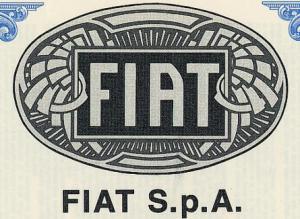
Nothing PI in it. In fact, I think it was misguided, that's all. Sure, Italian business has its peculiar models but Italian commerce doesn't always function the way "Northerners" expect business to be run and operated. Then again, Italy produces some of Europe's top CEO's on a consistent basis. Another one of those "Made in Italy" frustrating ironies.
Yet, upon closer inspection, to those who care to examine, there's indeed a method to the madness. It may not always be effective but there's a method. Has there been a country left for dead more times than Italy since not only in the post-war era, but since its unification in the late nineteenth century?
Fiat was part of Italy's "economic miracle" after the war. It has had its ups and downs and its CEO Sergio Marchionne seems set to lead FIAT down a profitable path.
It's appropriate to mention Fiat took over a couple of seminal names in Ferrari and Maserati and helped to reestablish their place in the industry.
I wouldn't dismiss the Fiat/Chrysler merger (if it were to happen) based on cultural stereotypes that no longer apply - especially in the auto industry where Italy has contributed its fair share of great companies and cars over the years.
That the Germans failed doesn't mean the Italians will follow suit. The question is, does Fiat need Chrysler?
*What I mean by positive and negative is positive remarks and comments (some of which are justified) tend to be strictly in the arts domain from food to fashion and design. Its commerce and industry garners negative, on average, thoughts.
This morning I was listening to the Tommy Schnurmacher Show on CJAD 800 (here in Montreal) interview associate professor of economics (at McGill I think) Tom Velk. Mr. Velk said something of interest regarding the possible merger of Fiat and Chrysler.
I loosely quote: hey I was driving. Excuse me if I didn't jot down word for word his comment.
"If the Germans couldn't make it work with Chrysler then, and I'm going to say something politically incorrect, there's little chance the Italians can make it work..."

Nothing PI in it. In fact, I think it was misguided, that's all. Sure, Italian business has its peculiar models but Italian commerce doesn't always function the way "Northerners" expect business to be run and operated. Then again, Italy produces some of Europe's top CEO's on a consistent basis. Another one of those "Made in Italy" frustrating ironies.
Yet, upon closer inspection, to those who care to examine, there's indeed a method to the madness. It may not always be effective but there's a method. Has there been a country left for dead more times than Italy since not only in the post-war era, but since its unification in the late nineteenth century?
Fiat was part of Italy's "economic miracle" after the war. It has had its ups and downs and its CEO Sergio Marchionne seems set to lead FIAT down a profitable path.
It's appropriate to mention Fiat took over a couple of seminal names in Ferrari and Maserati and helped to reestablish their place in the industry.
I wouldn't dismiss the Fiat/Chrysler merger (if it were to happen) based on cultural stereotypes that no longer apply - especially in the auto industry where Italy has contributed its fair share of great companies and cars over the years.
That the Germans failed doesn't mean the Italians will follow suit. The question is, does Fiat need Chrysler?
*What I mean by positive and negative is positive remarks and comments (some of which are justified) tend to be strictly in the arts domain from food to fashion and design. Its commerce and industry garners negative, on average, thoughts.
Taking On Italian Culinary Sophistication And Regionalism
I originally wrote this in May, 2006. I decided to post an edited and updated version for e-Talian.
I gotta admit, Jamie Oliver has balls to go along with his culinary talent.
I discovered the British chef on the foodnetwork (a British chef? Who knew?) while he traveled Italy in search of true and pure rustic regional Italian cooking. The episode titled "Great Italian Escape" intrigued me since I not only cook but also consider myself a purist in the Italian kitchen. Like I said; brave kid. I had to watch.
It's difficult for North Americans to get into an Italian mindset when it comes to demanding refinement. We're not a society devoted to food. It's more a chore in our day. We often, in some cases, eat like depraved gluttons. Italy is where I came to observe a dietary habit that was subtle in its near perfection. Everything from the times they eat to how they serve and compliment their food, Italians know what they're doing.
Food is a cornerstone of many societies, but in Italy it's taken to another level.
So subtle is their approach, even world famous chefs who regard Italian cuisine as simplistic overlook it. Until they pay closer attention. I have often lamented about how I wish people would spend a week in an Italian village. There they would learn to appreciate that food is a serious part of the human experience. They would also come to see why the sophisticated culinary diet of Italy is first rate. It's not all about spaghetti and meatballs. In some parts of Italy rice is consumed more. Betcha you didn't know that, eh?
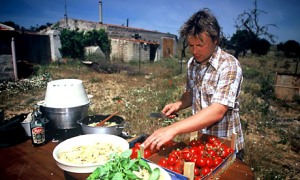
Jamie Oliver learnt what I learned the first time I went to Italy. There are laws of food to observe. Each region has its own approach to specific dishes and don't deviate from it. Just like there are natural and economic laws, there are culinary laws. Not in the haughty French manner (a society first introduced to high cuisine by Catherine De Medici who was known as L'Italienne in France) but in an understated Italian way.
When it comes to food, tasteful conservatism and minimalism prevails. In any event, you can't just mix and match ingredients. Fusion cuisine is all the rage and trend among chefs and diners these days; but don't tell that to the Italians.
In fact, it's what sometimes frustrated Oliver during the show. He explained that while he wished he had been born Italian, he could not understand their utter stubbornness and lack of open-mindedness when it comes to different interpretations of cooking. He submitted that the British were more open to other cuisine's whereas the Italians were less predisposed to try, say, Thai food.
He's right. On the other hand, it's easy for nations without a national diet or cuisine to be open.
For years, I wondered about Oliver's astute comment. Simplistically, therein lies why Italy is, well, Italy. If they weren't so single-minded and devoted to their art, they would cease to be Italian. It's a trade off of sorts. Italy is one of the "last of the Mohicans" among nations (especially among the G7) in that artisanship and craftsmanship of the highest quality -whether in shoes, machinery or furniture making and of course food - prevails.
In economics they call it opportunity costs. Sure, Italy could attempt to mass-produce in their typical chaotic fashion to make more money but that would not be fair to the rest of us. Italy remains a land ruled by dynasties who focus on one or two products and master its contents; just like how Charlie Parker mastered the saxophone without ever reading a single note.
It's in the Italian blood to make beautiful things. Though not the first, I'm glad Jamie Oliver educated and brought Italian cooking to its roots. Italian know-how takes a backseat to no one. He evidently underestimated the will of how Italians do things. He did a great job - and service - from where I stand. I'm sure Italians would approve.
I gotta admit, Jamie Oliver has balls to go along with his culinary talent.
I discovered the British chef on the foodnetwork (a British chef? Who knew?) while he traveled Italy in search of true and pure rustic regional Italian cooking. The episode titled "Great Italian Escape" intrigued me since I not only cook but also consider myself a purist in the Italian kitchen. Like I said; brave kid. I had to watch.
It's difficult for North Americans to get into an Italian mindset when it comes to demanding refinement. We're not a society devoted to food. It's more a chore in our day. We often, in some cases, eat like depraved gluttons. Italy is where I came to observe a dietary habit that was subtle in its near perfection. Everything from the times they eat to how they serve and compliment their food, Italians know what they're doing.
Food is a cornerstone of many societies, but in Italy it's taken to another level.
So subtle is their approach, even world famous chefs who regard Italian cuisine as simplistic overlook it. Until they pay closer attention. I have often lamented about how I wish people would spend a week in an Italian village. There they would learn to appreciate that food is a serious part of the human experience. They would also come to see why the sophisticated culinary diet of Italy is first rate. It's not all about spaghetti and meatballs. In some parts of Italy rice is consumed more. Betcha you didn't know that, eh?

Jamie Oliver learnt what I learned the first time I went to Italy. There are laws of food to observe. Each region has its own approach to specific dishes and don't deviate from it. Just like there are natural and economic laws, there are culinary laws. Not in the haughty French manner (a society first introduced to high cuisine by Catherine De Medici who was known as L'Italienne in France) but in an understated Italian way.
When it comes to food, tasteful conservatism and minimalism prevails. In any event, you can't just mix and match ingredients. Fusion cuisine is all the rage and trend among chefs and diners these days; but don't tell that to the Italians.
In fact, it's what sometimes frustrated Oliver during the show. He explained that while he wished he had been born Italian, he could not understand their utter stubbornness and lack of open-mindedness when it comes to different interpretations of cooking. He submitted that the British were more open to other cuisine's whereas the Italians were less predisposed to try, say, Thai food.
He's right. On the other hand, it's easy for nations without a national diet or cuisine to be open.
For years, I wondered about Oliver's astute comment. Simplistically, therein lies why Italy is, well, Italy. If they weren't so single-minded and devoted to their art, they would cease to be Italian. It's a trade off of sorts. Italy is one of the "last of the Mohicans" among nations (especially among the G7) in that artisanship and craftsmanship of the highest quality -whether in shoes, machinery or furniture making and of course food - prevails.
In economics they call it opportunity costs. Sure, Italy could attempt to mass-produce in their typical chaotic fashion to make more money but that would not be fair to the rest of us. Italy remains a land ruled by dynasties who focus on one or two products and master its contents; just like how Charlie Parker mastered the saxophone without ever reading a single note.
It's in the Italian blood to make beautiful things. Though not the first, I'm glad Jamie Oliver educated and brought Italian cooking to its roots. Italian know-how takes a backseat to no one. He evidently underestimated the will of how Italians do things. He did a great job - and service - from where I stand. I'm sure Italians would approve.
Liquid Gold: Olive Oil
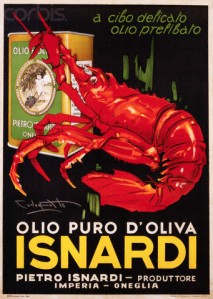 Olive oil, the heartbeat of Mediterranean cooking, remains somewhat of an obscurity to the North American palate - though less so in Quebec. Hopefully, this will change soon enough.
Olive oil, the heartbeat of Mediterranean cooking, remains somewhat of an obscurity to the North American palate - though less so in Quebec. Hopefully, this will change soon enough.While many countries make fine olive oil, Italy is still considered the world's principal producer of quality olive oil. Olive oil production in Italy stretches back to the Roman Empire in the 1st century A.D. The Romans, who were introduced to it by the Ancient Greeks, in turn exported it to Spain and North Africa.
The Italians were soon responsible to introducing and popularizing olive oil around Europe and the world.
By far, the largest producers and consumers of olive oil are Italy, Spain and Greece. Spain presently leads all nations in total production.
In recent years, the Italian olive oil community has been hit with bad PR. It seems there's not enough olive oil to support consumption and demand. And large companies have reacted by filling their bottles with olive oils from Turkey, Spain, and Greece and subsequently passing them as "Italian."
While this has hurt Italy's reputation, they're far from being alone. Here in Canada, according to the Canadian Food Inspection Agency, cheap impersonators have included Greek producers and several non-Italian distributors. If the French can overcome the scandal that hit their wine industry, there's no reason why the Italians won't get their act together to stamp out such sinful behavior.
Does this spell the end for Italian olive oil dominance? Not if the small producers have anything to say about it. Italy's well-earned reputation as makers of some of the best olive oil in the world remains in tact.
Now of course, how to distinguish who makes the "best" olive oil? At the end of the day, like wine, it all becomes a matter of personal choice. Each olive oil has its own distinctive aromas, taste, color and texture. Essentially olive oil characteristics are divided into mild, fruity and strong (usually comes with a peppery taste.) Extra-virgin olive oils are rated to be the highest quality. Some are better suited for cooking and others for straight consumption.
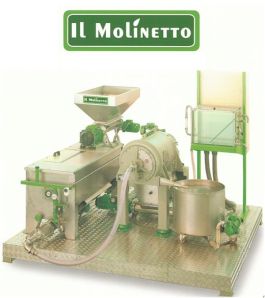 Italy remains an overwhelmingly diverse olive oil country. If you're not satisfied with big producers, my advice is to seek out one of the smaller olive oil artisan. It will cost you more but well worth it.
Italy remains an overwhelmingly diverse olive oil country. If you're not satisfied with big producers, my advice is to seek out one of the smaller olive oil artisan. It will cost you more but well worth it.Though the actual process of producing olive oil hasn't changed all the much over the centuries, with Italy maintaining a rustic approach of picking olives by hand in some instances, it doesn't mean there haven't been any technological advancements. And on this front,along with research, the Italians lead all its sister nations.
For more information about olive oil producers click on the "diverse" hyper-link above.
Architectural Magnificence
As usual, I've neglected my responsibilities to e-Talian. It's days like these I look to some friends to help me out and sure enough Wind Rose Hotel has come through.
If you've studied history in some capacity, you've probably come across the name of Andrea Palladio. The Venetian born Palladio is quite possibly the most influential architect in Western history.
"...This powerful integration of beauty and the physical representati

on of social meanings is apparent in three major building types: the urban palazzo, the agricultural villa, and the church."
"Palladio learned the principles of Vitruvius, the classical Roman architect whose treatise had been rediscovered in the prior century, and of the Renaissance commentator, Leon Battista Alberti. Through personal contact, he became acquainted with the ideas and works of pioneering architects of his own period, including Giulio Romano, Giovanni Maria Falconetto, Sebastiano Serlio and Michele Sanmicheli."
"...Palladio was an accomplished user of the new technology of movable type, then only about one hundred years old. His first book was a guide to the classical ruins of Rome, prompted presumably by his own frustrations in attempting to locate various monuments during his visits to that city."
If you've studied history in some capacity, you've probably come across the name of Andrea Palladio. The Venetian born Palladio is quite possibly the most influential architect in Western history.
"...This powerful integration of beauty and the physical representati

on of social meanings is apparent in three major building types: the urban palazzo, the agricultural villa, and the church."
"Palladio learned the principles of Vitruvius, the classical Roman architect whose treatise had been rediscovered in the prior century, and of the Renaissance commentator, Leon Battista Alberti. Through personal contact, he became acquainted with the ideas and works of pioneering architects of his own period, including Giulio Romano, Giovanni Maria Falconetto, Sebastiano Serlio and Michele Sanmicheli."
"...Palladio was an accomplished user of the new technology of movable type, then only about one hundred years old. His first book was a guide to the classical ruins of Rome, prompted presumably by his own frustrations in attempting to locate various monuments during his visits to that city."
Design Companies Persevere

Trying to make sense of Italy's automobile and design companies is a tough task. Notably because the Italian car industry did not, as far as I can tell, consolidate like it did in other major industrialized economies that boast an indigenous car industry. Many independent carrozzeria's and design/engineering companies founded in the early 20th century continue to survive - albeit either tenuously or under a new structure. While returning to profitability has proven difficult for some, the legacy engineering artisans and designers have left behind is staggering. This blog has already begun to explore it. Here's a look at a few more legendary names. Each come with its own distinctive international and Italian flair and flavor:
De Tomaso was founded in 1959 in Modena by Alejandro de Tomaso (1928-2003) who was born in Argentina. It's not just soccer players Argentina exported to Italy! Growing up, I had a few De Tomaso pinups in my room.
The story of Bugatti goes the opposite direction. The Bugatti car company was founded by Ettore Bugatti in 1909 in Molsheim, France. It's led a varied existence ever since. One of the all-time great car companies.
In 1912, Carrozzeria Bertone was conceived in Grugliasco (near Torino) by Giovanni Bertone. It originally specialized and built its exemplary reputation in the "construction and repair of horse-drawn carriages." After World War II it evolved into a style studio and a carrozzeria. It also produced the Lambretta and Luna range motor scooters.
Italdesign Giugiaro was the child of Giorgio Giugiaro and Aldo Mantovani in 1968. Italdesign's divisions are divided into styling, engineering, prototypes, and program management. Among the companies Italdesign worked with include Volswagen, BMW, Bugatti, Saab, Suzuki, Lancia, Ferrari, Daewoo and the Ford Mustang.
Carrozzeria Touring Alive And Well
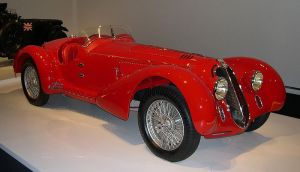
For 40 years starting in 1926, Carrozzeria Touring was a coach-builder noted for its superleggera (super lightweight) construction applications. The company was founded by Felice Bianchi Anderloni and Gaetano Ponzoni. Following Anderloni's death in 1948, his son Cici (Carlo Felice Bianchi Anderloni) took over along with Ponzoni.
The innovative and flexible system devised by Touring consisted of a structure engaging small diameter tubes formed around a body's shape. Thin alloy panels were attached to cover and strengthen the framework. The most notable examples being found in Alfa-Romeo 8C 2900, Maserati 3500GT and BMW 328. In addition, Lancia Flaminia, Aston Martin DB4 and Ferrari 166 coupe.
Touring did not survive its expansion plans as car manufacturers moved to bring coach-building in-house and major players such as Pininfarina (which is struggling to maintain profitability) proved competitively too much for Touring. The adherence to tradition and to ultimate quality also contributed to its struggles. The defunct, but not dead, Touring gave way to Carrozzeria Marazzi in 1967 which worked on Lamborghini bodies. In 2006, Touring/Marazzi entered an agreement with Dutch based Zeta Europe BV transferring all rights to it.
The deal keeps alive 80 years of stylistic and elegant coach-building design created by Touring. Its most recent project includes the Maserati Quattroporte.
The classic motor show (Concorso d' Eleganza) in Valle d' Este carries a trophy honoring the founders of Touring.
Before The de Medici's
The funny thing about researching about Italy's industrial side is the inescapable reality of coming into contact with other parts of its breathtaking history. It makes the job of consistency that much harder. The way I see it, every once in a while we like to eat that extra chocolate to satisfy an inner craving. And it's with this thought we delve into the Peruzzi merchant-banking family.
The interesting thing, among so many of course, about the Peruzzi's was the reminder of how overextending credit can be a nasty bit of business. France saw it during the Mississippi Scheme with John Law (though his bad rap seems a tad excessive) and we're witnessing it here in the present. The point is that none of this is anything new as the Peruzzi case shows.
Largely forgotten in the annals of popular history, the Peruzzi family's role in Renaissance history is remarkable and preceded the arrival of the more famous de Medici's. At the height of its powers, the Peruzzi's had the second largest bank in Europe by the early 1330s and the company had grown complex enough to invent the concept of double-entry bookkeeping. Its imprint on Renaissance Italy helped to lay the foundations for modern capitalism and contemporary corporate culture.
The Peruzzi name has not faded. Seeking new fortunes, the family arrived in North America in the 19th century and true to its entrepreneurial helped found Planters Nuts and Chocolate Company in 1906.
The interesting thing, among so many of course, about the Peruzzi's was the reminder of how overextending credit can be a nasty bit of business. France saw it during the Mississippi Scheme with John Law (though his bad rap seems a tad excessive) and we're witnessing it here in the present. The point is that none of this is anything new as the Peruzzi case shows.
Largely forgotten in the annals of popular history, the Peruzzi family's role in Renaissance history is remarkable and preceded the arrival of the more famous de Medici's. At the height of its powers, the Peruzzi's had the second largest bank in Europe by the early 1330s and the company had grown complex enough to invent the concept of double-entry bookkeeping. Its imprint on Renaissance Italy helped to lay the foundations for modern capitalism and contemporary corporate culture.
The Peruzzi name has not faded. Seeking new fortunes, the family arrived in North America in the 19th century and true to its entrepreneurial helped found Planters Nuts and Chocolate Company in 1906.
Buon Natale A Tutti
As I mentioned in an earlier post, I hope to take advantage and have some posts lined up during the holiday season. For now, keep warm (assuming you live in cold climate like me), stay healthy (wash your hands) and eat well Italian style.
Just An Update
I've been busy looking for a house. I'm presently living out of boxes and the bulk of my books, which are the source of my ideas, are all wrapped up. This is why it's a long gap between posts. I will aim to write something shortly and plan to come fresh and full of force in 2009!
Leonardo da Vinci Still Sends Shivers Down Spines
I know. The subject of Leonardo da Vinci has been done to death. Nonetheless, he remains one of the most mind-bloggling individuals in world history. His body of work is incredibly absurd. I'm not so sure he's even human. Maybe aliens do exist after all...
It's no wonder Italians have an enterprising and engineering mindset.
It's no wonder Italians have an enterprising and engineering mindset.
Sunday, October 25, 2009
The Ever Evolving World Of Espresso Technology
 Here's a great link to Espresso Nirvana and an article about the evolution of espresso machines. Naturally, given the importance espresso plays in the national diet of Italians, it's not surprising the country has been at the forefront of this complex brewing art. Personally, I'll be shopping for a machine next year. I started out with a Saeco but may move on to Rancilio or Gaggia.
Here's a great link to Espresso Nirvana and an article about the evolution of espresso machines. Naturally, given the importance espresso plays in the national diet of Italians, it's not surprising the country has been at the forefront of this complex brewing art. Personally, I'll be shopping for a machine next year. I started out with a Saeco but may move on to Rancilio or Gaggia.Despite the advantages of these fine machines, sometimes I find myself reverting to the traditional classic espresso maker from Bialetti.
Made of aluminum, the sharply designed, octagon shaped Moka Express (or la caffettiera as we call it. More like a'caffetier for North American Italian slang) has become an iconic symbol of Italian design much in the same vain as the Vespa.
Born in 1888 from humble beginnings, Alfonso Bialetti left a permanent social impact on the lives of hundreds of millions of people. Prior to his invention, only the wealthy could get access to an espresso in bars. With the Moka (and its many variations Napolitana, Milanese etc.)
 A few years ago I purchased a pressurized Moka that made la crema - think golden cream - espresso lovers seek.
A few years ago I purchased a pressurized Moka that made la crema - think golden cream - espresso lovers seek.My mother recently received as a gift the Mukka Express which gives you the added option of making latte caffe or cappuccino. Even though I own an espresso machine, I've had some fun using the Mukka whenever the opportunity presents itself.
One Sleek Helicopter
A welcomed thing to stumble upon for this site is Pininfarina's Agusta AW139 Executive Helicopter.
AW139 Executive Helicopter.
 AW139 Executive Helicopter.
AW139 Executive Helicopter.
Piaggio's Hybrid Scooter

Founded in 1884, Piaggio is best known for its iconic Vespa motor scooter lines. However, motor scooters are not the only products in the Piaggio creative arsenal.
Piaggio also manufactures a motorcycle line that includes storied brands Derbi, Moto Guzzi, Aprilia and Gilera.
Prior to World War II, the company was originally involved in the aeronautical industry and was known for, among other things, its bomber fighter planes and sporty sea planes. Piaggio entered the motorcycle industry after its plants were destroyed during the war. The company has since reentered aeronautics under the name Piaggio Aero.
Always on the cutting edge of technology, Piaggio has introduced to the world its eco-friendly three-wheeled Hybrid motor scooter.
Per La Prima Volta In Italia...
I've been a little busy and haven't been able to post - I have a mounting list of topics and companies to get to. In the meantime, I came across this video of Bruce Springsteen and the E Street Band live in Italy. Springsteen is of Italian heritage on his mothers side - maiden name Zirilli - and, well, you should watch the video. It's a gem.
Florence: No City Like It
Someone I know asked me to explain to them in words why people who visit Florence leave the city in awe. She's never been but was trying to get a sense of the city from afar. I wasn't sure how to answer her question lest I fail to give the city justice. It's one thing to explain Florence to historically inclined individuals and quite another to those who don't.

I gave it a go and dug deep within my own personal experience. I remember overlooking Florence from Piazzale Michaelangelo with two friends (one who hailed from Grossetto) and feeling the full weight of Florence's cultural heritage flashing before my eyes and soul.
At Basilica di Santa Croce - the largest Franciscan church in the world founded by St. Francis - buried within its magnificent church walls are Galileo, Donatello, Marconi, Fermi and Michaelangelo, Machiavelli and Rossini. I still shiver at this deathly fact. It richly deserves its alternate name: Pantheon of the Italian Glories.
Which led me to simply state:
Once you enter its borders, you instinctively know and feel great things in human history happened here.

I gave it a go and dug deep within my own personal experience. I remember overlooking Florence from Piazzale Michaelangelo with two friends (one who hailed from Grossetto) and feeling the full weight of Florence's cultural heritage flashing before my eyes and soul.
At Basilica di Santa Croce - the largest Franciscan church in the world founded by St. Francis - buried within its magnificent church walls are Galileo, Donatello, Marconi, Fermi and Michaelangelo, Machiavelli and Rossini. I still shiver at this deathly fact. It richly deserves its alternate name: Pantheon of the Italian Glories.
Which led me to simply state:
Once you enter its borders, you instinctively know and feel great things in human history happened here.
Beretta: Happiness Is A Warm Gun
Bang, Bang.
Established in 1526 Fabbrica d'Armi Pietro Beretta (part of Beretta Holding group) is one of the world's oldest corporations. The company has remained with the Beretta family for 15 generations.
Its firearms (includes but not restricted to side-by-side shotguns, over/under shotguns, hunting and assault rifles, submachine guns, semi-automatics, single and double action revolvers) are used all over the world by civilians, police and armies; the most recent deal concluded with Canada Borders Services Agency.
 A major success for the Italian company was the adoption of the 92 series by United States military, US Navy and State Police organizations while France’s Gendarmerie Nationale and the French Air Force have also selected the 92 series for its operations.
A major success for the Italian company was the adoption of the 92 series by United States military, US Navy and State Police organizations while France’s Gendarmerie Nationale and the French Air Force have also selected the 92 series for its operations.
Other signings include 92FS pistols for the Spanish Guardia Civil and 92 series for the Turkish Police
Beretta's success in national defence and law enforcement have been equalled in other realms of society including competitive shooting. Beretta won its first Olympic Gold medal in clay pigeon shooting in Melbourne, in 1956 and have consistently won medals in several Olympics ever since. Their competition shotguns have won more Olympic Games, World Championships and various other international competitions than any other manufacturer.
Asi fht his wasn't enough, Beretta is not limited to firearms manufacturing. The company is engaged in bringing a sense of style and lifestyle through its clothing, travel accessories and fine wines which all cater to modern hunters.
Beretta Holdings also owns three other gun manufacturers. They comprise of Franchi, Benelli (also known for its motorcycle heritage) and Stoeger Industries.
There are two other companies outside the Beretta family. These are: Fratelli Tanfoglio (its popular weapons are especially used for sports competitions and private use), Perazzi (precision shotguns. Gorgeous site), Armi Jager and Finmeccanica which focuses on aerospace and defense.
Established in 1526 Fabbrica d'Armi Pietro Beretta (part of Beretta Holding group) is one of the world's oldest corporations. The company has remained with the Beretta family for 15 generations.
Its firearms (includes but not restricted to side-by-side shotguns, over/under shotguns, hunting and assault rifles, submachine guns, semi-automatics, single and double action revolvers) are used all over the world by civilians, police and armies; the most recent deal concluded with Canada Borders Services Agency.
 A major success for the Italian company was the adoption of the 92 series by United States military, US Navy and State Police organizations while France’s Gendarmerie Nationale and the French Air Force have also selected the 92 series for its operations.
A major success for the Italian company was the adoption of the 92 series by United States military, US Navy and State Police organizations while France’s Gendarmerie Nationale and the French Air Force have also selected the 92 series for its operations.Other signings include 92FS pistols for the Spanish Guardia Civil and 92 series for the Turkish Police
Beretta's success in national defence and law enforcement have been equalled in other realms of society including competitive shooting. Beretta won its first Olympic Gold medal in clay pigeon shooting in Melbourne, in 1956 and have consistently won medals in several Olympics ever since. Their competition shotguns have won more Olympic Games, World Championships and various other international competitions than any other manufacturer.
Asi fht his wasn't enough, Beretta is not limited to firearms manufacturing. The company is engaged in bringing a sense of style and lifestyle through its clothing, travel accessories and fine wines which all cater to modern hunters.
Beretta Holdings also owns three other gun manufacturers. They comprise of Franchi, Benelli (also known for its motorcycle heritage) and Stoeger Industries.
There are two other companies outside the Beretta family. These are: Fratelli Tanfoglio (its popular weapons are especially used for sports competitions and private use), Perazzi (precision shotguns. Gorgeous site), Armi Jager and Finmeccanica which focuses on aerospace and defense.
Zagato's World
Another famous design company that had its roots in the aeronautical industry was Zagato . Founded in 1919 by Ugo Zagato (and currently run by Marella and Andrea Zagato) , the company's avant garde (adhering to functionalism and rationalism), light-weight designs and materials were applied to the early legendary Alfa Romeo race cars such as the 1500 and introduced to the world the Coupe and Gran Turism concepts. The list of manufacturers Zagato has created prototypes and designs for included Aston-Martin, Lancia, Ford, Jaguar, Volvo and Rolls-Royce.
. Founded in 1919 by Ugo Zagato (and currently run by Marella and Andrea Zagato) , the company's avant garde (adhering to functionalism and rationalism), light-weight designs and materials were applied to the early legendary Alfa Romeo race cars such as the 1500 and introduced to the world the Coupe and Gran Turism concepts. The list of manufacturers Zagato has created prototypes and designs for included Aston-Martin, Lancia, Ford, Jaguar, Volvo and Rolls-Royce.
Photo: The Diatto Ottovu designed by Zagato.
 . Founded in 1919 by Ugo Zagato (and currently run by Marella and Andrea Zagato) , the company's avant garde (adhering to functionalism and rationalism), light-weight designs and materials were applied to the early legendary Alfa Romeo race cars such as the 1500 and introduced to the world the Coupe and Gran Turism concepts. The list of manufacturers Zagato has created prototypes and designs for included Aston-Martin, Lancia, Ford, Jaguar, Volvo and Rolls-Royce.
. Founded in 1919 by Ugo Zagato (and currently run by Marella and Andrea Zagato) , the company's avant garde (adhering to functionalism and rationalism), light-weight designs and materials were applied to the early legendary Alfa Romeo race cars such as the 1500 and introduced to the world the Coupe and Gran Turism concepts. The list of manufacturers Zagato has created prototypes and designs for included Aston-Martin, Lancia, Ford, Jaguar, Volvo and Rolls-Royce.Photo: The Diatto Ottovu designed by Zagato.
A Historical Question About Italy
For the history literate, Italy is a land that has been settled and invaded by numerous tribes and countries over the centuries. It's a land that's known the Etruscans, Greeks, Romans, Germanic tribes (various branches of the Goths, Lombards etc.) Normans, Arabs, Celts (aka Gauls), French, Spanish, Austrian-Hungarians and so on. In many ways, Italy was an international hub where many of the world's great cultures came to conquer (mostly for strategic reasons but prestigious ones as well. It looked to have Italy in your trophy case) and learn from her.
Given that Italian culture generally prevailed over its invaders, nevertheless there was bound to be some going the other way.
This where I ask, which society or culture has had the greatest impact and influence on Italy? Did any of leaving a mark on why Italy has a long and substantial legacy in industrial design, engineering and innovative manufacturing that eventually found its way into movements like avant-garde in the 20th century? Assuming there's a link. I think there is one.
Given that Italian culture generally prevailed over its invaders, nevertheless there was bound to be some going the other way.
This where I ask, which society or culture has had the greatest impact and influence on Italy? Did any of leaving a mark on why Italy has a long and substantial legacy in industrial design, engineering and innovative manufacturing that eventually found its way into movements like avant-garde in the 20th century? Assuming there's a link. I think there is one.
High Oil Prices Could Kill Off Italy?
I won't be strict about what I'll post on this blog. From time to time, I'll be posting interesting articles from the blog world or elsewhere regarding Italy.
Here's one from The Oil Drum wondering if Italy can exist with oil above $100 a barrel. There are many intelligent thoughts on the comment section as well. It sounds like the UK and Italy are battling for the title of "basket case" economies.
While Italy's political culture is unresponsive for the most part, its business culture (though its economy remains too tolerant of strikes and protectionism) tends to be highly flexible when faced with crucial moments. Is it capable of coming up with efficient car engines, solar panels and other technologies to help deal with high oil prices? As one person suggested, the good news is that Italy does get much if its gas from North Africa so not all is bleak as some paint it.
Nonetheless, it didn't stop one Italian private wine dealer living in Paris telling me in 2004 with a somber disapproving nod that things in Italy are bound to "explode."
Italy has been on the brink many times in the 20th century and always managed to progress. To understand this of course is to understand how the Italian mind works. Like its soccer team, it only seems to perform when the pressure is on.
This is why it leaves people to ask if its nine lives up from time to time.
Updated April, 2009:
Then again maybe not. According to The Economist "Pocket World In Figures" Italy was the most efficient user of energy as a percentage of GDP per kg in Europe and 11th best in the world in 1999. In this link, it remains efficient. I'm a little out of my league here so I hope someone could shed some light on how to make sense of all this.
Here's one from The Oil Drum wondering if Italy can exist with oil above $100 a barrel. There are many intelligent thoughts on the comment section as well. It sounds like the UK and Italy are battling for the title of "basket case" economies.
While Italy's political culture is unresponsive for the most part, its business culture (though its economy remains too tolerant of strikes and protectionism) tends to be highly flexible when faced with crucial moments. Is it capable of coming up with efficient car engines, solar panels and other technologies to help deal with high oil prices? As one person suggested, the good news is that Italy does get much if its gas from North Africa so not all is bleak as some paint it.
Nonetheless, it didn't stop one Italian private wine dealer living in Paris telling me in 2004 with a somber disapproving nod that things in Italy are bound to "explode."
Italy has been on the brink many times in the 20th century and always managed to progress. To understand this of course is to understand how the Italian mind works. Like its soccer team, it only seems to perform when the pressure is on.
This is why it leaves people to ask if its nine lives up from time to time.
Updated April, 2009:
Then again maybe not. According to The Economist "Pocket World In Figures" Italy was the most efficient user of energy as a percentage of GDP per kg in Europe and 11th best in the world in 1999. In this link, it remains efficient. I'm a little out of my league here so I hope someone could shed some light on how to make sense of all this.
Villaggio Crespi D'Adda
UNESCO World Heritage site, Crespi D'Adda is considered the perfect workers' village created and built by the Crespi family. The Crespi's were cotton manufacturers based in Lombardy.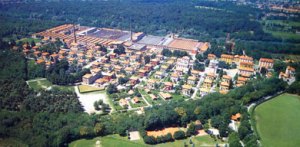

Pininfarina: Masters Of Design

The Pininfarina family were stricken with tragedy recently when Chairman and CEO Andrea Pinifarina lost his life in a traffic accident earlier this month.
Who are Pininfarina?
Pininfarina is a car design company founded by Battista "Pinin" Farina in Torino (Turin), 1930. In the beginning, it specialized in small production car bodies. Over the years, Pininfarina has become a world leader not only in car design but industrial and interior design as well.
 The company's innovative design on the Cisitalia 202 (1947-1952) put them at the forefront of their craft and in demand on the world stage. In the process, Cisitalia became known as a "running sculptor and the first car to be on permanent display in the world at the Modern Museum of Modern Art (MOMA) in New York.
The company's innovative design on the Cisitalia 202 (1947-1952) put them at the forefront of their craft and in demand on the world stage. In the process, Cisitalia became known as a "running sculptor and the first car to be on permanent display in the world at the Modern Museum of Modern Art (MOMA) in New York.”One of the eight outstanding cars of our time”: the Cisitalia, realised on tubular chassis and manufactured in limited series with aluminium body welded to a skeleton of fine sheet steel, has a design which marks a decisive turnpoint of the automotive style" goes the caption found on Pininfarina's website.
With time Pininfarina helped design the tram system in Lille, France, high-speed trains in the Netherlands and trolley's such as the Boston Green Line.
In recent years, Pininfarina has partenered with the Volvo C70, Peugeot 1007 and Maserati Gran Turismo.
 Above all, along with its brilliant work with some of the top car manufacturers and corporations in the world, Pininfarina has a long-established legendary partnership with Alfa-Romeo and Ferrari.
Above all, along with its brilliant work with some of the top car manufacturers and corporations in the world, Pininfarina has a long-established legendary partnership with Alfa-Romeo and Ferrari.For more information on Pininfarina and its magnificent history of design please their website. Link above.
Photo: From Pininfarina website. 1937, Aprilia with curveture design.
The Maserati Aura
 I've always been a disciple of Italian cars and Maserati in particular. The history and philosophy of Italian car manufacturing and technology took a decidedly different turn other legendary automobile countries like Germany, Great Britain, Sweden, United States and France. Though Britain and Italy share a common interest given their tradition of building independent sleek, speedy sports cars.
I've always been a disciple of Italian cars and Maserati in particular. The history and philosophy of Italian car manufacturing and technology took a decidedly different turn other legendary automobile countries like Germany, Great Britain, Sweden, United States and France. Though Britain and Italy share a common interest given their tradition of building independent sleek, speedy sports cars.Maserati has come back into the North American market. This is nothing new for Italian manufacturers who tend to be marked by inconsistent interest when dealing abroad. I remember when Alfa Romeo did the same with the 164L models (we purchased one in 1994) in the 1990s and just as quickly disappeared into the Northern Italian sun.
Italian cars are not German cars. They have different
 interpretations of what constitutes a car. The prevailing belief is that the Germans own all the advancements in car engineering. As a whole, the Germans produce wonderful masterpieces like BMW (my father purchased the 733i in 1984. A car that marked BMW's permanent return into North America) and Mercedes. Even Audi has come through with some great cars recently. However, Italy too
interpretations of what constitutes a car. The prevailing belief is that the Germans own all the advancements in car engineering. As a whole, the Germans produce wonderful masterpieces like BMW (my father purchased the 733i in 1984. A car that marked BMW's permanent return into North America) and Mercedes. Even Audi has come through with some great cars recently. However, Italy too has something to say from Brembo breaking systems to unmatched design through companies like Zagato and Pininfarina.
has something to say from Brembo breaking systems to unmatched design through companies like Zagato and Pininfarina.In the luxury car market Japan and Germany (even Sweden with Volvo and Saab) rightfully have the market cornered. However, if you're a person looking for something different then you may want to consider Maserati. Be forewarned, once you experience an Italian car you may never turn you're back on it.
 Maybe not as reliable for harsh winters but its aura is intoxicating. Perhaps temperamental but its beauty indisputable. Yes, it can be stubborn but admittedly smooth in its delivery. There's something about riding in an Italian car and if you're one that is tired of everyone owning a Lexus, Bimmer or 'Cedes well stand out and drive a Renaissance classic like the Maserati!
Maybe not as reliable for harsh winters but its aura is intoxicating. Perhaps temperamental but its beauty indisputable. Yes, it can be stubborn but admittedly smooth in its delivery. There's something about riding in an Italian car and if you're one that is tired of everyone owning a Lexus, Bimmer or 'Cedes well stand out and drive a Renaissance classic like the Maserati!
The Fall And Rise Of Bimota
Bimota may not have the long and storied history of Ducati or Moto Guzzi but in 35 years it has left a mark on customized motorcycles. The company filed for bankruptcy earlier this decade but has since returned.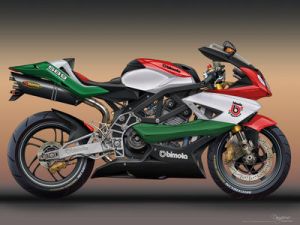
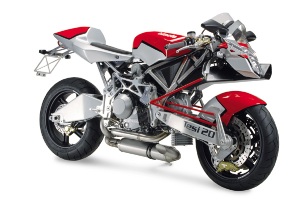


The Science And Innovation Of Fashion; The Search For Great Italian Designers
The world of Italian business is not without its problems. There are, for example, 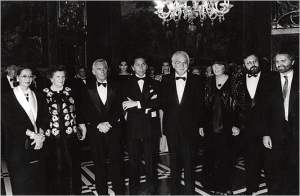 some concerns regarding the future of homegrown Italian designers as this New York Times article explains. Another interesting piece on the state and future of Italian fashion is from CSC.
some concerns regarding the future of homegrown Italian designers as this New York Times article explains. Another interesting piece on the state and future of Italian fashion is from CSC.
Indeed, when you achieve greatness there's always a danger in slipping.
But what about the science and technology side of the fashion coin?
There's a scientific and technological approach to fashion?
Consider the art of finding and designing the ultimate "comfort" in clothes. This excerpt was partially edited for enhanced grammar : "Its physiological properties, by electronic instruments: theme insulation, resistance to perspiration, its use in fabrics under normal conditions, but also in motion under unforeseen increases of heat and humidity, or under sudden variations in outside temperatures, in order to guarantee an ideal micro-climate by using the layers of air between skin and fabric, the cut of the clothing, the circulation of outside air. This means that it is becoming a must to develop an authentic "clothing science" to study, for instance, how to achieve with the materials and the way of assembling them the best-suited thermal insulation (knowledge of the behavior of birds and other animals, for instance, can contribute to this end."
This is an Interesting comment asserted by Omar Calabrese made in Special Features of the Italian Industrial Manufacturing Model.
In addition to embracing technology, the ability of the Italian fashion industry to expand abroad and innovate better than anyone and eventually meant it surpassed its Latin cousins from the great French fashion model.
The legendary Italian fashion houses from Zegna to Gucci to the Missoni's have left a majestral imprint on the evolution of fashion. I would not be surprised to see it bounce back from its cyclical low.
Here's a great read from Brandthroposophy.
*Photo from NYT article by Cathy Horyn: Here's the caption it came with:
A friend found this picture in an archive and I love all that it conveys about Italian fashion. I’m not sure of the identities of the two women on the left (perhaps someone on the blog can help), but, from left to right, that’s Giorgio Armani, Valentino, a former Italian president, Mariuccia Mandelli, Gianfranco Ferre and Gianni Versace. Hovering in the background, behind Valentino, is Giancarlo Giammetti. Swell picture, isn’t it?
 some concerns regarding the future of homegrown Italian designers as this New York Times article explains. Another interesting piece on the state and future of Italian fashion is from CSC.
some concerns regarding the future of homegrown Italian designers as this New York Times article explains. Another interesting piece on the state and future of Italian fashion is from CSC.Indeed, when you achieve greatness there's always a danger in slipping.
But what about the science and technology side of the fashion coin?
There's a scientific and technological approach to fashion?
Consider the art of finding and designing the ultimate "comfort" in clothes. This excerpt was partially edited for enhanced grammar : "Its physiological properties, by electronic instruments: theme insulation, resistance to perspiration, its use in fabrics under normal conditions, but also in motion under unforeseen increases of heat and humidity, or under sudden variations in outside temperatures, in order to guarantee an ideal micro-climate by using the layers of air between skin and fabric, the cut of the clothing, the circulation of outside air. This means that it is becoming a must to develop an authentic "clothing science" to study, for instance, how to achieve with the materials and the way of assembling them the best-suited thermal insulation (knowledge of the behavior of birds and other animals, for instance, can contribute to this end."
This is an Interesting comment asserted by Omar Calabrese made in Special Features of the Italian Industrial Manufacturing Model.
In addition to embracing technology, the ability of the Italian fashion industry to expand abroad and innovate better than anyone and eventually meant it surpassed its Latin cousins from the great French fashion model.
The legendary Italian fashion houses from Zegna to Gucci to the Missoni's have left a majestral imprint on the evolution of fashion. I would not be surprised to see it bounce back from its cyclical low.
Here's a great read from Brandthroposophy.
*Photo from NYT article by Cathy Horyn: Here's the caption it came with:
A friend found this picture in an archive and I love all that it conveys about Italian fashion. I’m not sure of the identities of the two women on the left (perhaps someone on the blog can help), but, from left to right, that’s Giorgio Armani, Valentino, a former Italian president, Mariuccia Mandelli, Gianfranco Ferre and Gianni Versace. Hovering in the background, behind Valentino, is Giancarlo Giammetti. Swell picture, isn’t it?
Subscribe to:
Posts (Atom)


